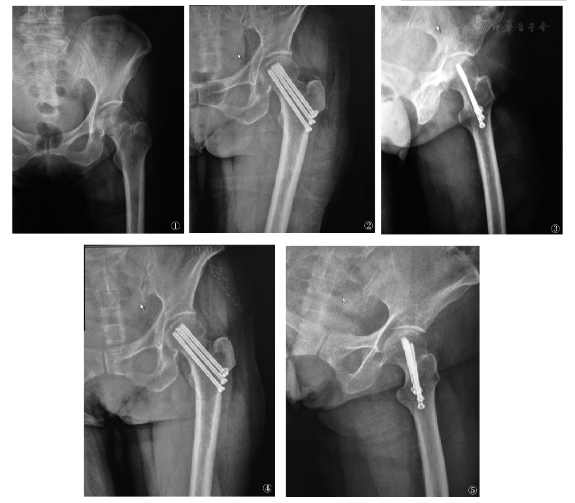Objective To compare and analyze the epidemiological features of femoral intertrochanteric fractures in the elderly between Northern and Eastern areas of China from January 2010 to December 2011.
Methods Data of human fractures treated between January 2010 to December 2011 in 39 hospitals in northern and eastern China were collected through the PACS system and case reports checking system. The data of 18 hospitals in northern China were classified as group A, while data of 21 hospitals in eastern China were classified as group B. Gender, age, side and fracture classification between two groups were compared.
Results A total of 5,413 femoral intertrochanteric fractures in the elderly were divided into group A (3,324 cases) and group B (2,089 cases). There were 2,116 males (39.09%) and 3,297 females (60.91%), with a male/female ratio of 1:1.56. The median age of all the patients was 79 years old (65-103 years old). Left side (2,791 cases, 51.56%) outnumbered the right side (2,622 cases, 48.44%). There were 1,431 males and 1,893 females in the group A (M/F=1:1.32), and 685 males and 1,404 females in group B (M/F=1:2.05, χ2=56.712, P<0.001). The median age of the two groups were 78 years and 81 years, respectively, difference was statistically significant (Z=-12.282, P<0.001). The predominant age group in group A was 75 to 79 years, accounting for 25.42% (845/3,324). The predominant age group in group B was from 80 to 84 years, accounting for 26.28% (549/2,089) . The high-risk type was type Ⅰ in group A, accounting for 28.34% (942/3,324). While in group B the high-risk type was type Ⅱ, accounting for 29.15% (609/20,894). There were no significant differences in type Ⅴ, while differences were statistically significant between the two groups in other types (P<0.05).
Conclusions Femoral intertrochanteric fractures in elderly were most seen in females and the highest frequency fracture type was type Ⅰ and type Ⅱ in Northern and Eastern areas of China, respectively. Compared with northern China, the patients were older, the proportion of females was higher in eastern China. The proportion of type Ⅰ and typeⅢ was lower, while the proportion of type Ⅱ and type Ⅳwas higher.
